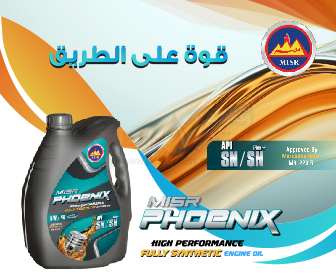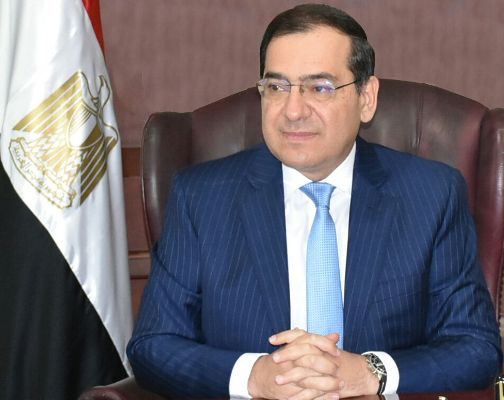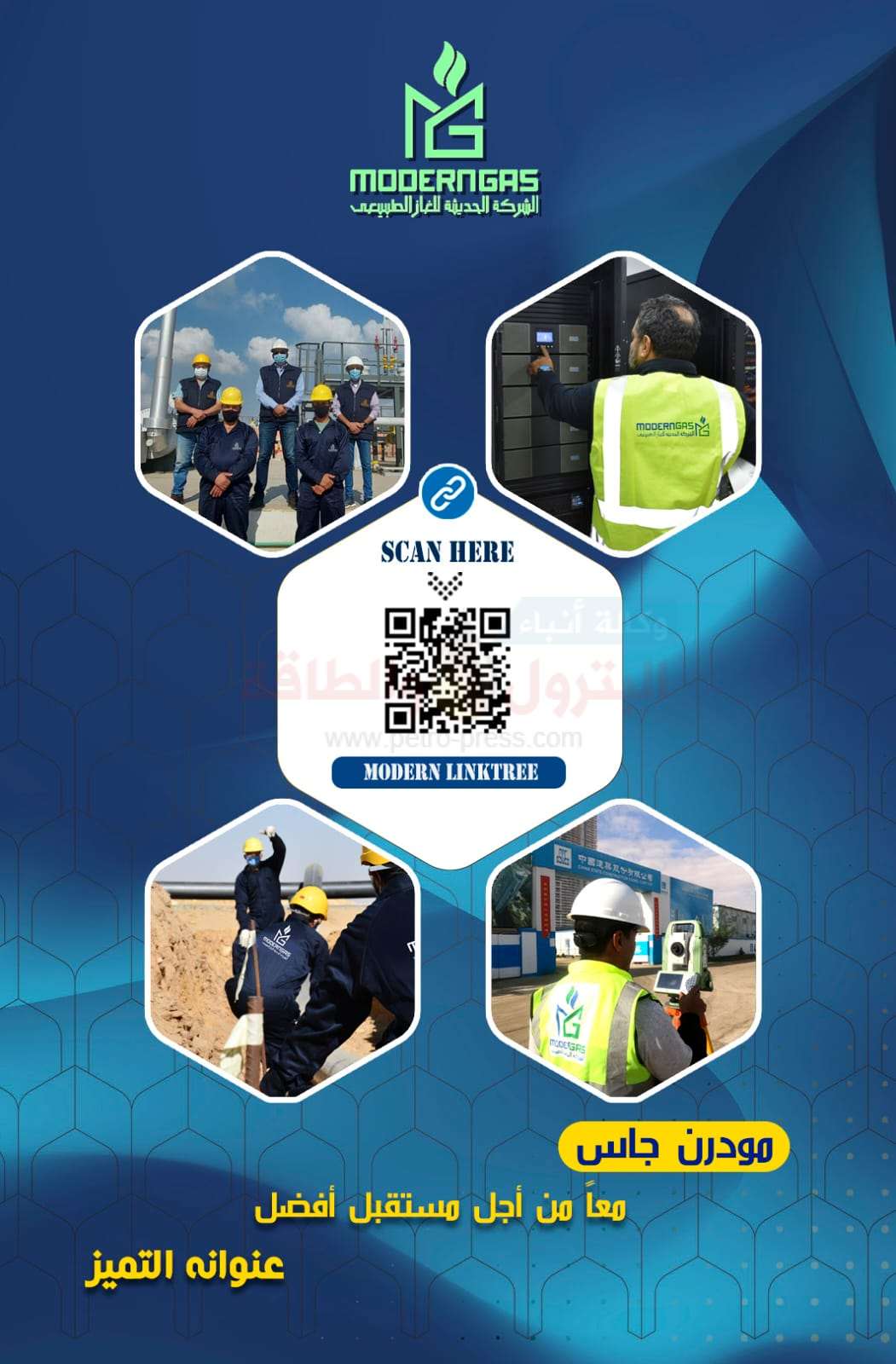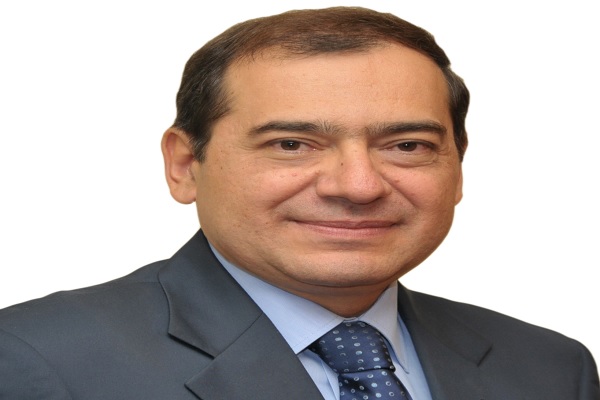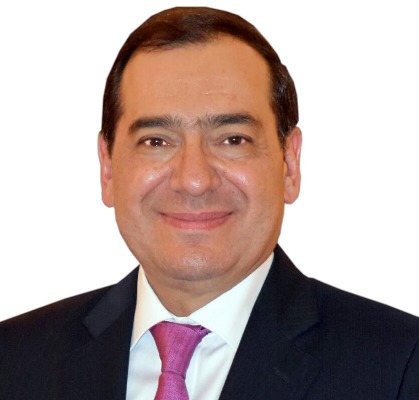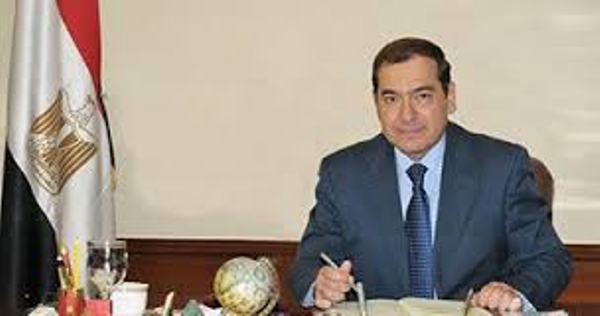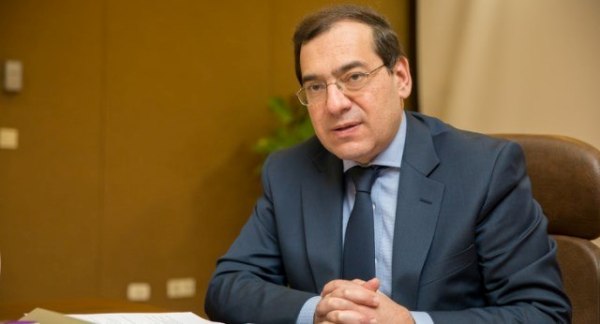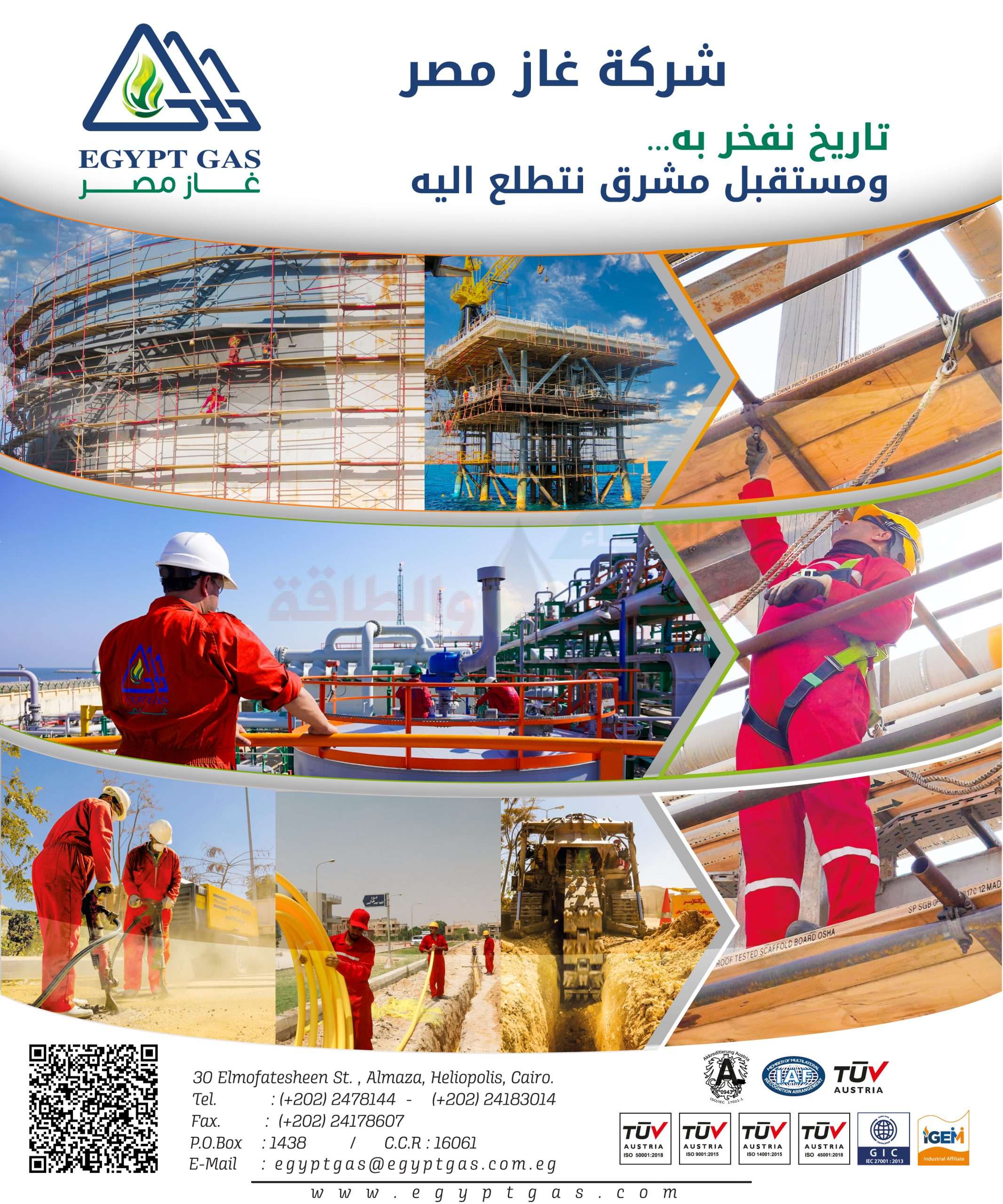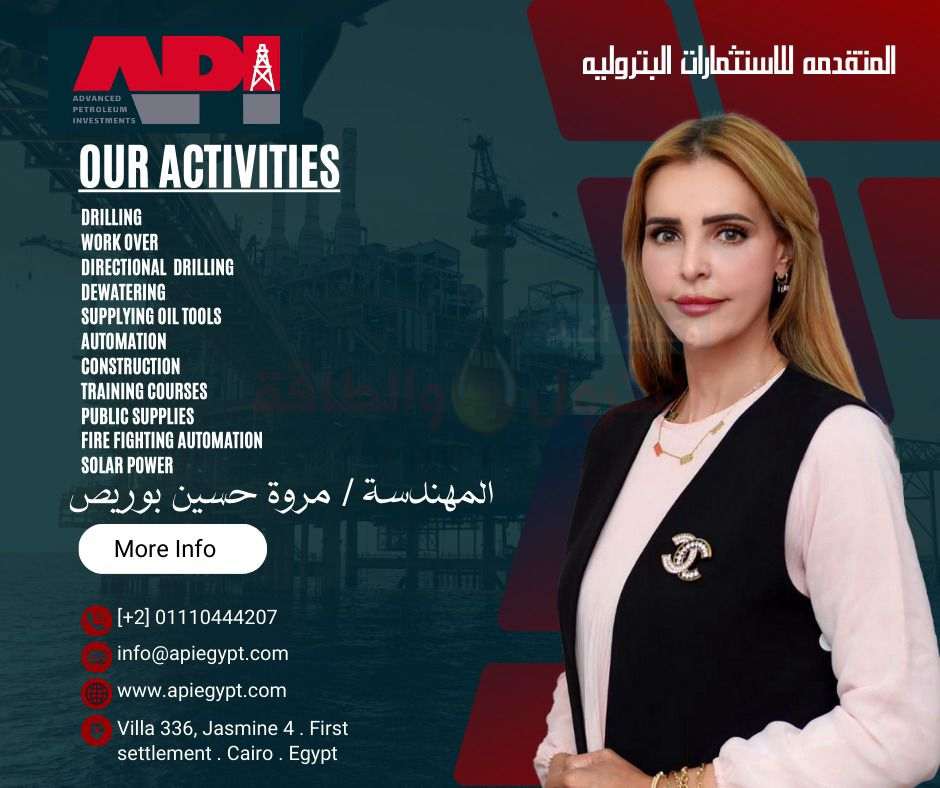وزير البترول المصرى فى حواره لـ “MEES”..مصر تمتلك مفاتيح مستقبل صناعة الغاز بالمتوسط..وسنقدم قريبا نماذج استثمارية جديدة ..نستهدف 10 مليار دولار استثمارات أجنبية فى 2018-1919.. استيراد شركات القطاع الخاص للغاز من قبرص واسرائيل سيخضع للقوانين واللوائح الجديدة للغاز
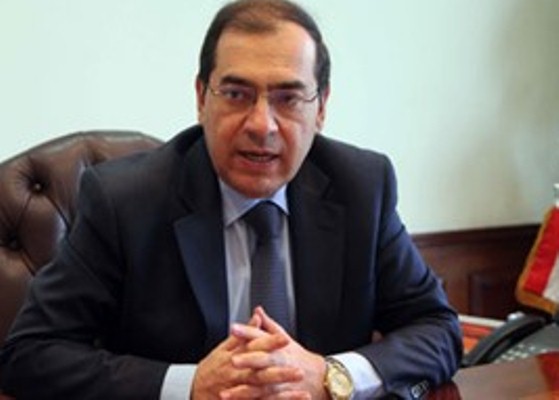
إعداد وترجمة – رأفت إبراهيم – القاهرة وكالة أنباء البترول والطاقة
أجرى المهندس طارق الملا وزير البترول والثروة المعدنية ، حواراً صحفياً مع نشرة MEES والتى تقدم “أخبار وتحليلات وبيانات أسبوعية عن النفط والغاز في الشرق الأوسطـ ، حيث تحدث الوزير خلال الحوار عن طموحات البلاد لتصبح مركزًا إقليميًا للطاقة وكيف تخطط لزيادة الاستثمار في قطاع البحث عن البترول والغاز.
كما تطرق وزير البترول المصرى إلى الاستثمارات الأجنبية التى تستهدفها وزارة البترول خلال العام المالى الحالى لافتا إلى أن الوزارة ستقدم قريبا نماذج استثمارية جديدة لتشجيع الشركات العالمية الجديدة على المجيء والتنافس على مناطق الاستكشاف الواعدة مؤكدا أن عملية استيراد شركات القطاع الخاص للغاز من الحقول القبرصية أو الإسرائيلية ستخضع للقوانين واللوائح الجديدة للغاز..، والى نص الحوار ..
بداية هناك اختلاف كبير فى تحول مصر من استيراد الغاز بدءا من عام 2015 إلي إعتمادها على تأمين إحتياجاتها من الغاز من الانتاج المحلي هذا العام…ماهو العامل الرئيسي لهذا التغيير؟
لقد واجه قطاع البترول عدة تحديات في السنوات الأخيرة نتيجة للحالة السياسية والاقتصادية في مصر بين الثورتين في يناير 2011 ويونيو 2013، و انخفضت الاستثمارات في صناعة البترول ، وكان هناك تعطل للمشاريع الكبرى وانخفض إنتاج النفط والغاز.
ومع ذلك ، منذ يونيو 2013 ، قمنا بتنفيذ خريطة طريق ذات رؤية استراتيجية واضحة لمواجهة تلك التحديات ، وضمان أمن الطاقة ، وتحقيق الاستدامة المالية وتحسين بيئة الاستثمار، وتزامن ذلك بالطبع مع برنامج الإصلاح الحكومي لاستعادة الاستقرار الاقتصادي وتعزيز النمو الاقتصادي.
لقد وقعنا منذ ذلك الحين 95 اتفاقية جديدة للبحث عن البترول والغاز ، تحتوي على حوافز وتسهيلات مرنة، وكان هذا واضحًا في الاهتمام الملحوظ الذي حققته شركات النفط العالمية خلال الفترة الماضية كما نجحنا فى ، خفض متأخرات شركات النفط العالمية إلى 1.2 مليار دولار ، وهو أقل مستوى منذ 2010 .
علاوة على ذلك ، قمنا بالتطوير السريع لـ4 حقول غاز وتم وضعها على خريطة الإنتاج ؛ “ظهر ، و أتول ، ونورس وشمال الإسكندرية “دلتا النيل الغربي”، وقد ساعدت هذه الحوافز على مزيد من أنشطة الاستثمار والتنقيب في المنطقة.
لقد بدأنا الآن مرحلة الاكتفاء الذاتي من الغاز ، اعتمادا على مواردنا المحلية لتلبية الطلب المحلي، وبالتالي ، توقفنا استيراد الغاز المسال تمامًا بعد استلام الشحنة الأخيرة في نهاية شهر سبتمبر، وتزامن ذلك مع نمو إنتاج الغاز المصري إلى حوالي 6.6 مليار قدم مكعبة ، بفضل التقدم المستمر في حقل ظهر .
تهدف مصر إلى أن تكون مركزًا إقليميًا للطاقة…ما مدى تقدم المحادثات بشأن استيراد الغاز؟
لدى الحكومة المصرية رؤية محددة وهدف يتمثل في تحويل مصر إلى مركز طاقة إقليمي، يشمل البرنامج تنفيذ مشاريع البنية التحتية الجديدة ، وتحقيق الاستغلال الأمثل للمشروعات القائمة ، وإصدار التشريعات اللازمة لدعم استثمارات النفط والغاز.
وبالتالي ، صدر القانون المنظم لأنشطة سوق الغاز وإنشاء نظام تنظيمي مستقل يوفر لشركات القطاع الخاص فرصة الدخول والتنافس في جميع مجالات صناعة الغاز، وهنا أود أن أشير إلى أن الاتفاقية بين شركات القطاع الخاص لتلقي الغاز من الحقول القبرصية أو الإسرائيلية ستخضع لقوانين اللوائح الجديدة للغاز.
وتم توقيع مذكرات تفاهم مع الاتحاد الأوروبي وقبرص والأردن لدعم هذه الخطوات لتصبح مركزًا إقليميًا، وتمتلك مصر مفاتيح مستقبل صناعة الغاز في شرق البحر المتوسط بسبب موقعها وبنيتها التحتية الممتازة ومرافقها مثل محطات توليد الطاقة ومحطات تسييل الغاز ووحدات تغويز ومصافي النفط ومستودعات التخزين والمحطات الطرفية وكذلك خطوط الأنابيب.
نجحت مصر في جذب مليارات الدولارات من الاستثمارات الأجنبية في قطاع الطاقة مؤخرًا، ما مدى استهداف مصر في السنوات القادمة؟
بحلول نهاية السنة المالية السابقة ، 2017 ، التي انتهت في 30 يونيو ، بلغت الاستثمارات الأولية من الشركات الأجنبية والمشاريع المشتركة نحو 10 مليار دولار ، ونتوقع نفس الشيء خلال السنة المالية الحالية (2018-1919).
تقوم وزارة البترول حاليا بتنفيذ مشاريع جديدة من شأنها مضاعفة الخارطة الاستثمارية لمصر للتنقيب عن النفط والغاز وإنتاجه، ويجري إطلاق المسوحات السيزمية في البحر الأحمر وخليج السويس وغرب البحر الأبيض المتوسط لتحديد المناطق ذات الآفاق الواعدة وعرضها من خلال جولات المزايدات العالمية، ونحن نعمل أيضا على إنشاء البوابة الإلكترونية المصرية لتسويق صناعة البترول لجذب الاستثمارات.
“لقد غير حقل ظهر قواعد اللعبة” ..كم أثر هذا الاكتشاف على لاعبين آخرين لإعادة النظر في مساحتهم المصرية أو لاعبين جدد لدخول مصر؟
حقل ظهر هو أكبر اكتشاف للغاز في مصر والبحر الأبيض المتوسط، وتجاوزت التنمية مجالات مماثلة في أجزاء أخرى من العالم ، في سرعة الإنجاز، لا شك أن هذا النجاح يساعد على جذب المزيد من الاستثمارات وفتح آفاق جديدة للاستكشاف في البحر الأبيض المتوسط ، ولا سيما في المياه العميقة.
كما حفز الشركات على تكثيف أنشطة الاستكشاف في المناطق المجاورة ؛ وأهمها التنازل عن المياه العميقة لشركة إديسون الإيطالية ذات الآفاق الواعدة .
كما يجذب هذا النجاح العديد من شركات النفط الدولية التي لم تعمل من قبل في مصر وتشجعها على دراسة فرص الاستثمار القائمة في مجال الاستكشاف والمشاركة في جولات عروض الأسعار الدولية. بالإضافة إلى ذلك ، سنقدم قريبا نماذج استثمارية جديدة لتشجيع الشركات العالمية الجديدة على المجيء والتنافس على مناطق الاستكشاف الواعدة.
وماذا عن المزايدات التى تم طرحها مؤخرا؟
في نهاية مايو 2018 ، تم الاعلان عن مزايدتين عالميتين لصالح الهيئة العامة للبترول والقابضة للغازات الطبيعية ايجاس للتنقيب عن النفط والغاز والاستغلال ، في خليج السويس ، الصحراء الغربية والشرقية ، دلتا النيل والبحر الأبيض المتوسط.
تم إغلاق العروض لمزايدة الهيئة المصرية العامة للبترول فى 1 أكتوبر ، ويجري تقييم العروض قبل الإعلان عن الفائزين، أما بالنسبة لـلقابضة للغازات ايجاس، فإن الموعد النهائي هو 29 نوفمبر.
أود أن أشير إلى أن اتفاقية الترسيم البحري مع المملكة العربية السعودية مهدت الطريق لبدء النشاط النفطي في البحر الأحمر ، والذي لم يكن ممكنا من قبل، وقد أطلقت الوزارة الآن برنامجًا لوضع منطقة البحر الأحمر على خريطة الاستثمار للتنقيب عن النفط والغاز، وهي منطقة غير مستغلة لم تشهد أي نشاط نفطي ، باستثناء خليج السويس.
في الواقع ، ستعتمد المزايدة الأولى بالبحر الأحمر على نتائج مشروع تجميع البيانات الجيوفيزيائية الذي تبلغ تكلفته 750 مليون دولار لهذه المناطق ، الذي نفذته WesternGeco (شلمبرجير و TGS)، وسيتم طرح المزايدة العالمية للبحث عن البترول والغاز بالبحر الأحمر قبل نهاية العام الحالي،
ما هي خطط وزارة البترول لزيادة إنتاجها من النفط؟
يهدف مشروع تطوير وتحديث القطاع لزيادة إنتاج النفط والغاز من خلال تعزيز أنشطة الاستكشاف وزيادة الاستثمارات.
يتم تنفيذ خطة لزيادة الإنتاج من الحقول الحالية وتسريع خطط تطوير المشاريع الجديدة، و التحسينات التكنولوجية ستزيد الكفاءة في مرافق الإنتاج وتخفيض التكاليف، وهذا واضح بشكل خاص في الصحراء الغربية ، حيث كانت هناك ثلاثة اكتشافات حديثة من قبل الشركة الإيطالية ، إيني ، وهذا يشجع الشركات العالمية على توجيه استثماراتها إلى الصحراء الغربية ، المليئة بالآفاق الواعدة.
فيما يتعلق بمشاريع التكرير ، تمتلك مصر 8 مصافٍ بطاقة إنتاجية تبلغ 25 مليون طن سنوياً ، يتم زيادة طاقة المصفاة في مصر لتصل إلى 41 مليون طن سنوياً ، بعد الانتهاء من التطوير المستمر، و تقوم الوزارة حاليا بتنفيذ خطة لتطوير وتحسين كفاءة المصافي الحالية لمواكبة نمو الطلب المحلي وخفض الواردات.
أما بالنسبة لواردات النفط الخام والمنتجات البترولية ، فلدينا عقود مع شركة أرامكو السعودية لتوريد الخام والمنتجات ومع شركة سوناطراك الجزائرية الحكومية لتوريد غاز البترول المسال، كما أن هناك عقوداً مع شركة تسويق النفط العراقية (سومو) العراقية لتوريد النفط الخام لمصافي التكرير المصرية وشركة نفط الكويت ، اللتين تقومان بتوريد النفط الخام والمنتجات النفطية الكويتية لسنوات.
ما الخطط الموضوعة لتنمية المنطقة الاقتصادية لقناة السويس والمنطقة المحيطة بها؟
في منطقة العين السخنة ، تجري حالياً مشاريع إستراتيجية في موانئ سوميد والسخنة لإنشاء وتشغيل محطات تخزين ومنافذ لاستقبال وتجارة وتخزين المنتجات البترولية لتطوير رؤية مصر في أن تصبح مركزاً إقليمياً.
وهناك أيضا خطة لإنشاء أنشطة التزويد بالوقود وبناء مشاريع التكرير والبتروكيماويات بعد توقيع عقد أكبر مجمع للبتروكيماويات في منطقة الشرق الأوسط في منطقة قناة السويس الاقتصادية، وسيتم تشييده في العين السخنة على مساحة 5 مليون متر مربع ، باستثمارات تبلغ حوالي 11 مليار دولار.
ــــــــــــــــــــــــــــــــــــــــــــــــــــــــــــــــــــــــــــــــــــــــــــــــــــــــــــــــــــــــــ
MEES Interview With Egypt’s Minister Of Petroleum
Egypt’s Minister of Petroleum Tarek El Molla speaks exclusively to MEES about the country’s ambitions to become a regional energy hub and how it plans to boost investment in its upstream sector.
Q: It has been a remarkable turnaround from starting LNG imports in 2015 to securing gas independence earlier this year. What have been the driving forces
A: The petroleum sector faced several challenges in recent years stemming from the political and economic situation in Egypt between the two revolutions of January 2011 and June 2013. Investments in the petroleum industry fell, there was disruption of major projects and oil and gas output declined.
However, since June 2013, we have implemented a road map with a clear strategic vision to meet those challenges, ensure energy security, achieve financial sustainability and improve the investment environment. This, of course, coincided with the government’s reform program to restore economic stability and promote economic growth.
We have since signed 95 new upstream agreements containing incentives and flexible provisions. This was evident in the remarkable interest of IOCs in subsequent international bid rounds for oil and gas exploration, and our success in reducing IOCs’ arrears to $1.2bn, the lowest level since 2010 ( MEES, 13 July ).
Moreover, we fast-tracked development of four major Mediterranean gas fields and put them on the production map; Zohr, Atoll, Nooros and North Alexandria [West Nile Delta]. These have provided impetus for further investment and exploration activities in the region.
We have now started the phase of gas self-sufficiency, depending on our domestic resources to fulfill local demand. Hence, we halted LNG imports completely after receiving the last shipment at the end of September. This coincided with the growth of Egyptian gas production to about 6.6bn cfd, thanks to the continuous progress of Zohr ( MEES, 5 October ).
Q: Egypt aims to be a regional energy hub. How far have talks on importing gas ?progressed
A: The Egyptian government has a specific vision and goal of turning Egypt into a regional energy hub. The program includes the implementation of new infrastructure projects, achieving the optimal exploitation of existing ones, and issuing the necessary legislation to support oil and gas investments.
Thus, the law regulating gas market activities was issued and an independent regulatory system established which provides private sector firms the opportunity to enter and compete in all fields of the gas industry. Here I would like to point out that the agreement between private sector companies to receive gas from Cypriot or Israeli fields will be subject to the laws of the new gas regulations.
Memorandums of Understanding have been signed with the European Union, Cyprus and Jordan to support these steps to become a regional hub.
Egypt has the keys to the future of the gas industry in the Eastern Mediterranean due to its position, excellent infrastructure and facilities such as power plants, gas liquefaction plants, gasification units, refineries, storage depots, terminals as well as pipelines.
Q: Egypt has managed to attract billions of dollars in foreign investment in the energy sector recently. How much is Egypt targeting in the coming years
A: By the end of the previous fiscal year, 2017-18, which ended on 30 June, upstream investments from foreign firms and joint ventures reached about $10bn, and we expect the same over the current fiscal year (2018-19).
The Ministry of Petroleum is currently implementing new projects that will double the investment map of Egypt for oil and gas exploration and production. Seismic surveys are being shot in the Red Sea, Gulf of Suez and the western Mediterranean to identify areas with promising prospects and offer them through international bid rounds.
We are also working on the establishment of the Egyptian e-portal for marketing the petroleum industry to attract IOC investments.
Q: Zohr has been ‘game-changing.’ How much has the discovery influenced other players to re-examine their Egyptian acreage or new players to enter Egypt
A: Zohr is the largest ever gas discovery in Egypt and the Mediterranean. Development exceeded similar fields in other parts of the world, in speed of completion. No doubt, this success helps attract more investments and open new horizons for exploration in the Mediterranean, particularly in deep waters.
It also stimulated companies to intensify exploration activities in neighboring regions; the most important of which is the deep-water concession of Italian firm Edison with promising prospects (see map p2).
This success also attracts various IOCs that have never previously worked in Egypt and encourages them to study existing investment opportunities in exploration and to participate in international bid rounds. In addition, we will soon present new investment models to encourage new international companies to come and compete for promising exploration regions.
Q: Can you provide an update for the most recent bid rounds
A: At the end of May 2018, two international bid rounds for EGPC and EGAS were offered for oil and gas exploration and exploitation, in the Gulf of Suez, the Western and Eastern Deserts, the Nile Delta and the Mediterranean Sea.
The EGPC bid round has closed on 1 October, and offers are being evaluated before we announce the awards. As for EGAS, the closing date is 29 November.
I would like to note that the maritime demarcation agreement with Saudi Arabia paved the way for oil activity to start up in the Red Sea, which was not possible before. The Ministry has now launched a program for putting the Red Sea region on the investment map for oil and gas exploration. It is an untapped area that has not experienced any oil activity, except in the Gulf of Suez.
Actually, this first Red Sea bid round will be based on the results of the $750mn geophysical data compilation project for those areas, carried out by WesternGeco (Schlumberger and TGS). The bid round will be offered before the end of the year.
Q: What plans does the Ministry have to increase oil output
A: The Ministry’s development project aims to modernize the sector to increase the production of oil and gas by boosting exploration activities and increasing investments.
A plan is being implemented to increase production from existing fields and accelerate new projects’ development plans. Technological enhancements will increase efficiency at production facilities and reduce costs. This is particularly evident in the Western Desert, where there were three recent discoveries by the Italian firm, Eni, in the Faghur basin ( MEES, 3 August ). This encourages international companies to direct their investments to the Western Desert, which is full of promising prospects.
Regarding refining projects, Egypt has eight refineries with a production capacity of 25mn t/y [502,000 b/d]. Egypt’s refinery capacity is being increased to reach 41mn t/y [823,000 b/d] after the completion of ongoing development. The Ministry is currently implementing a plan to develop and upgrade the efficiency of existing refineries to keep pace with growing domestic demand and reduce imports.
As for crude oil and petroleum products imports, we have contracts with Saudi Aramco for crude and products supply and with Algeria’s state firm Sonatrach for supplying LPG. There are also contracts with Iraq’s state marketer, SOMO, to supply crude oil for Egyptian refineries and KOC, who have been supplying Kuwaiti crude and petroleum products for years.
Q: What plans are in place for the development of the Suez Canal Economic Zone and the surrounding area?
A: In the Ain Sokhna region, strategic projects are currently under way at the Sumed and Al-Sokhna ports to establish and operate terminals and storage depots to receive, trade and store petroleum products to develop Egypt’s vision of becoming a regional hub.
There is also a plan to establish bunkering activities and build refining and petrochemical projects following the signing of the contract for the largest petrochemical complex in the Middle East at Suez Canal Economic Zone. It will be constructed in Ain Sokhna, 5mn meters² in size, with investments of about $ 11bn.



